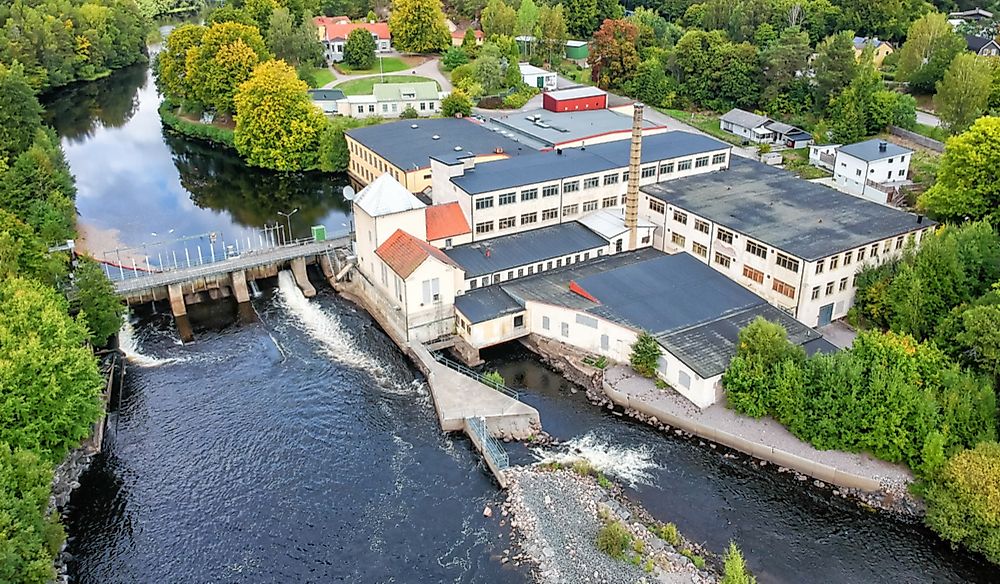What Are The Major Natural Resources Of Sweden?

Sweden is a Scandinavian country located in Northern Europe. It borders Norway and Finland. Sweden is adorned with medieval towns as well as royal palaces, museums, and over 50 bridges. The country’s population is 10.2 million people. Its capital city is Stockholm and the official language is Swedish. Sweden’s economy is historically very strong as opposed to many developed world economies. During the 2007-2009 Global Financial Crisis, Sweden overcame the wave through its application of stringent fiscal discipline. Its current GDP per capita is $54,474. The country’s export-oriented mixed economy is pegged on the skilled labor force, telecommunication, and manufacturing. Some of the most important natural resources are water, minerals, arable land, forests, and fish.
Major Natural Resources in Sweden
Minerals
Minerals form a major part of the natural resources in Sweden. They include arsenic, copper, gold, iron ore, lead, silver, uranium, zinc, tungsten, and feldspar. Norrbotten and Skellefte districts are the most significant mining areas in Sweden. Iron is among the major mineral resources in Sweden. The mining deposits are owned by the government and are located at Kiruna in Lappland. The Kiruna mining center has been operational since the 19th century. Other metals such as gold, copper, zinc, and lead are mined at Boliden in Norrland. Mining of metal ores contributes largely to the GDP of Sweden as the country is among the largest iron and steel producers in the world.
Water
The energy needs for the country are met by both hydroelectric power and nuclear power. Renewable energy is the primary source of energy due to the depletion of crude oil resources. The largest hydroelectric power plants are located on the Lule River in Northern Sweden. The largest plant, Harsprånget, produces nearly 1,000 megawatts. The center of the country also has a number of large and medium-sized plants.
Arable Land
Sweden’s growing season is relatively short because the country is located within the Arctic Circle. However, Swedes still find time to engage in farming as approximately 45,000 square kilometers is cultivated. Fertile land is mostly located in southern Sweden, although arable portions of land also exist up to the Arctic Circle. Consequently, more farming takes place in the south compared to the north. Crops grown in Sweden include wheat, potatoes, barley, oilseeds, sugar beets, rapeseed, and staple vegetables. Farmers also cultivate hay in some portions of the land. Although farmers primarily engage in crop farming, they prefer animal agriculture. Dairy cows, poultry, and pig rearing are the predominant animal rearing activities. Dairy farming contributes 20% of the Swedish agricultural industry. Almost 5,00 dairy farmers produce 2.8 billion kilograms of milk every year. On average, Swedish farmers rear 70 cows. The farmers restrict the use of GMO products, provide 6 hours of grazing during summer, and engage the cows in “green walking.” Sweden’s farming sector employs over 177,500 people which amounts to 1.5% of its workforce.
Forests
Almost three-quarters of all Swedish farms possess timberland. The ownership of the forestland in the country is shared between private, corporate, and government owners in the ratio of 2:1:1 respectively. The trees that grow naturally in Swedish forests are spruce and pine whose average harvest period is 100 years in the north and 50 years in the south respectively. Sweden has a strict policy regulating the ratio between cutting and new growth of forestry to prevent deforestation and over logging. Wood from the forests in Sweden was once utilized in the mining industry as sources of coal for ore processing. Other forestry products included potash, wood, tar, and pitch that were exports in the Middle Ages. Some of the popular forests in Sweden today are Tiveden, Ed Forest, Kolmärden, Kilsbergen, and Tylöskog.
Fish
Sweden has over 90,000 lakes. The largest lake is Lake Vänern which is 5,600 square kilometers by surface area. Besides lake fishing, residents also engage in river fishing and coastline fishing. Examples of fish caught in Sweden are garfish, sea trout, herring, pike, cod, plaice, perch, mackerel, salmon, shrimp, and lobster. The leading fishing market and harbor in Sweden is known as Gothenburg. The Fisheries Act regulates the fishing industry. One of the common rules of fishing is that fishing with nets and tip-up fishing without a license is not allowed. Fishing in Sweden is also done as a sport since it is cheap, easy, and simple. Some of the best winter fishing lakes include Ankarvattnet, Stora Bläsjön, Ockesjön, and Fillingen.
The Future of Sweden’s Natural Resources
Currently, one of the largest mining economies in the European Union, Sweden’s future largely depends on minerals such as iron, lead, zinc, and copper. Consequently, its mining policy is designed to keep it in the lucrative mineral markets. The main economic resources in Sweden are part of the natural resources namely hydro-power, timber, and iron ore.











